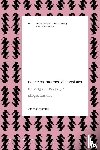Omschrijving
Innovative perspective to the meaningful import of body and materiality in the translation process, a focal point of recent literature in Translation Studies This book is situated in the breach opened up by recent debates on inherited notions of text, language, and translation that followed the emergence of new technologies. It examines two works of contemporary dance, Marie Chouinard’s Jérôme Bosch: Le Jardin des Délices (2016) and Mathieu Geffré’s Froth on the Daydream (2018), as examples of intermedial translation. Conceptualising translation through the lens of theatrical dance allows us to see the translation process as a creative, corporeal, and political practice of negotiating human and non-human agencies, deeply intertwined with issues of memory and struggles over representation. Drawing on a wide range of theoretical debates from translation theory, dance studies, cultural theory, gender studies, postcolonialism, art history, cognitive linguistics, multimodality, film studies, and memory studies, as well as on concrete examples of performative works, the book charts a course for the development of dance translation as a legitimate, if still under-researched, subfield of translation studies.Vanessa Montesi is a HE Lecturer in Dance Studies at Dance City/University of Sunderland, a member of the Centre for Comparative Studies (University of Lisbon), and a trustee at Company of Others."A very original and daring work, which grapples with some of the most complex theoretical questions currently animating Translation Studies, and applies them, in a compelling way, to the study of theatrical dance." - Karen Bennett, NOVA University of Lisbon – School of Social Sciences and Humanities (NOVA FCSH) This book is situated in the breach opened up by recent debates on inherited notions of text, language, and translation that followed the emergence of new technologies. It examines two works of contemporary dance, Marie Chouinard’s Jérôme Bosch: Le Jardin des Délices (2016) and Mathieu Geffré’s Froth on the Daydream (2018), as examples of intermedial translation. Conceptualising translation through the lens of theatrical dance allows us to see the translation process as a creative, corporeal, and political practice of negotiating human and non-human agencies, deeply intertwined with issues of memory and struggles over representation. Drawing on a wide range of theoretical debates from translation theory, dance studies, cultural theory, gender studies, postcolonialism, art history, cognitive linguistics, multimodality, film studies, and memory studies, as well as on concrete examples of performative works, the book charts a course for the development of dance translation as a legitimate, if still under-researched, subfield of translation studies. List of Figures
List of Text Boxes
List of Tables
Acknowledgements
Prelude: Setting Words in Motion
Three Anecdotes…
…and an Introduction
OFFSTAGE
1.Stretching
Ways of Stretching
What about Dance?
Theoretical Grounding: Multimodal Social Semiotics and Intermediality
2.Rehearsing
Dance and the Visual Arts
Dance and Language
Dance and Literature
Dance and Translation
Transition
TROIS COUPS
3.What’s in a Name?
O’, Be Some Other Name!
‘Tis but thy Name that is my Enemy!
What’s in a Name?
Deny thy Father, and Refuse thy Name
4.Words Written in the Air: Dance as Ephemeral Writing
How Can We Know the Dancer from the Dance?
We Need to Know the Dancer from the Dance
Can We Know the Dancer from the Dance?
Why Should We Know the Dancer from the Dance?
5.Translated/Translating Bodies and the Translator’s Embodied Dramaturgy
The Dancer’s Embodied Dramaturgy
Translated Bodies
The Translator’s Embodied Dramaturgy
Interlude
Methodology and Methods
Embodied Ethnography and Embodied Writing
PERFORMING
6.Translational Agency in Jérôme Bosch: Le Jardin des Délices
Jérôme Bosch: Le Jardin des Délices (2016)
Political Agency in Dance and Translation
7.Distributed Agency in Jérôme Bosch: Le Jardin des Délices
Translating the Painting into Somatic Sensations
Distributed Agency
Spatial and Discursive Framings: The Garden of Earthly Delights at the Gallery of Nassau
Spatial and Discursive Framings: Jérôme Bosch: Le Jardin des Délices at the CCB
8.Translation and Memory in Froth on the Daydream (2018)
Translation and Memory Studies
Boris Vian: Living and Writing in the Translation Zone
Translation History of L’Écume des Jours
Froth on the Daydream (2018): Offstage
Froth on the Daydream (2018): Performing
9.Translations and Memories of L’Écume des Jours
Cracks in the color-blind image of Paris: Belmont’s L’Écume des Jours (1967)
Performing the Imaginative West in Late Soviet Russia: Denisov’s Chloé (1981)
From Surrealism to Magic(al) Realism: Gô Rijû’s Kuroe (2001)
Performing the Materiality of Bodies and Graphic Line: Preteseille’s L’Écume d’Écume des Jours (2005)
Inheriting French Surrealist Cinema: Michel Gondry’s Mood Indigo (2013)
After the Tide Has Gone, What Remains? Translation and/as Memory
Postlude: Unwinding
Three Anecdotes…
…and a Conclusion
Appendixes
Notes
References


